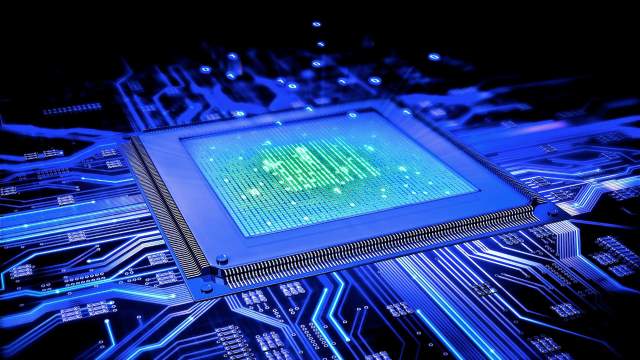What does 7nm and 10nm mean for CPUs and why does it matter?

Those of us who think about buying a new smartphone or any other digital device, must keep the processor in mind. For example, if we want to buy a mobile, then we want to know how many nanometers the architecture of the processor of that mobile is made. As suggested by various people, we always want to choose processors with low nanometer technology and buy all those devices.
The processor of the device we used can be 7nm or 10nm. But, what does “7nm” or “10nm” mean in the case of a CPU and what does this number mean?
A CPU is made up of billions of tiny transistors. And they are made using Electric Gates; which turns on and off the calculation. Doing these calculations requires energy. And the smaller the transistors of a processor, the less power it will consume. “7nm” and “10nm” are the sizes of these transistors – where “nm” refers to nanometers.
This number is very important to judge how powerful a processor is. And, how much energy a processor will consume and how powerful it will be depends on this metric. Let’s discuss this in a little more detail.
Why is the processor’s nanometer so important?
According to an old observation, the number of transistors on a chip doubles every year and its cost halves. But while this observation has been true for a long time, the process has slowed recently. Transistors produced in the late 90s and early 2000s shrunk in half every year. And in this sequence, the processors are getting great improvement on a regular basis.
But, as time progresses, this process of shrinking the processor becomes more complicated. And as a result, we haven’t seen an Intel transistor get smaller since 2014.
As Intel lags behind, mobile devices look to make their own chips. Apple’s A12X chip is being manufactured on TSMC’s 7nm process and Samsung’s own chip is being manufactured on 10nm process. And AMD’s next CPUs are being manufactured on TSMC’s 7nm process. This created a race for them to overtake Intel and counter Intel’s monopoly in the market; That is until Intel’s 10nm “Sunny Cove” chips start hitting the shelves.
What does “nm” actually mean?
The full form of nm is Nanometer. CPUs are mainly manufactured using photolithography. Where an image of the CPU is etched onto a part of the silicon. The exact method of how this process is done is usually referred to as the Process Node and the manufacturer determines how small the transistors can be made.
Since smaller transistors are more energy efficient, it can do more calculations without overheating. As a result, processing consumes less energy and increases the performance of a CPU to a greater extent. The smaller the size of a CPU’s transistors, the higher its cost and the higher the density of transistors within the same size. If more transistors can be placed within a given size, the number of cores per chip can be increased.
A 7nm processor’s transistors are twice as thick as a 14nm processor. That is, the smaller the size of a CPU, the higher the density of transistors inside it.
However, this number is not enough to judge the good or bad of a processor or CPU. That is, the performance of a CPU cannot be judged by the density of transistors inside it. However, it is important to note that a 14nm CPU does not mean that a 7nm CPU will be twice as fast as a 14nm one. It does not depend on the size of the transistor. However, the performance of a 7nm CPU will be higher in many cases than a 14nm density CPU. For example, Intel’s 10nm CPU is expected to compete with TSMC’s 7nm CPU.
The impact of CPU nanometers on mobile chips
Compressing a CPU’s performance is most noticeable in devices like mobiles and laptops. Whereas, a 7nm CPU can consume at least 25% less power than a 14nm CPU. You can get more performance at 7nm under the same power; Because it will consume less power. And, in the case of a mobile or laptop, battery power is much more important. Here the processor with less nanometer technology can provide more battery backup than the processor with more nanometer technology.
A powerful chip greatly enhances the performance of our small devices.
A microchip being smaller is always good news. Because, a faster and a stronger chip affects almost every aspect of the technology world. The smaller the microchips used in our devices continue to be, the lower their power consumption will be. And, the more transistors can be placed inside the same volume, the more its performance will increase.
When we go to buy a new mobile, we definitely try to get the phone with less nanometer technology processor. Because, comparing the two mobiles, the performance of the less nanometer CPU will be higher. Hope, I have been able to understand you about nm (Nanometer) technology.





